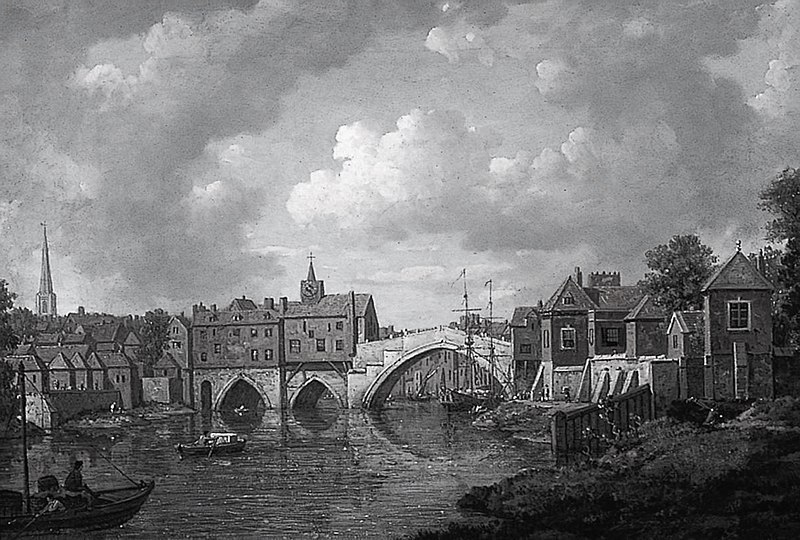True Tales of Tudor York is a new book about the history of York during the reign of the Tudors, the people who lived there and those who shaped their lives. This is the second in a series of articles covering topics linked to the book, all profits from which are being donated to St Leonard’s Hospice in York.
The fascinating early eighteenth century book The Antiquities of York City, and the Civil Government Thereof… Collected from the Papers of Christopher Halyard contains detailed lists of York’s mayors, sheriffs and other officials appointed between 1273 and 1719. The book also contains a number of fascinating snippets of information.
One entry for example describes the great flood of 1564:
“This year {1564} on twelfth-day, Ouse Bridge was broken down, by reason of a great snow and sudden thaw. The water did rise to a great height, in so much as the flood and ice being so vehement that two bows within one arch and twelve houses standing upon the bridge were overthrown, and twelve persons drowned”.
In addition to the loss of life and housing, the wider impact on the city was significant. Ouse Bridge was the only road crossing point over the main river in York until well into the nineteenth century. Just as in the nearby town of Tadcaster in 2015, Tudor York was split into two.
The Minster, York Castle and the city’s main shops and markets were located on the north-eastern side of the river. A smaller but still significant part of the city’s population was isolated and cut off from the city’s amenities on the other side.
The main road into York from London, the Midlands, the south and the west of the country entered the city via Micklegate Bar on the western side. This road was now effectively blocked.
Eventually, a temporary ferry service was initiated. This enabled people and limited amounts of goods to cross over the river in the centre of the city. In Tudor times, bridges over rivers as large as the Ouse were few and far between. The only alternative to using the temporary ferry was to make a lengthy diversion to cross the Ouse at another location, such as the ferry service at Naburn some five miles south of the city.
Repairs to the bridge became a major priority, creating one of the most important engineering projects in Northern England at the time. The local council called the Corporation of York levied a new local tax to raise funds to pay for the work. The taxes collected were supplemented by donations made by wealthy merchants.
For example, the recently deceased Lady Jane Hall, widow of former Lord Mayor of York Robert Hall, donated one hundred pounds in her will towards the work. Interestingly, Jane was the daughter of another former Lord Mayor Of York, William Harrington, who’d presided over the city during the Pilgrimage of Grace. As such, Jane was a relative of Guy Fawkes.
Returning to the topic in hand, the redesign of the bridge included creating a much larger central arch span to replace the destroyed segments. The bridge was finally recommissioned in 1566. People, animals, barrows and wagons were able to cross once again.
A year later, the river was dredged in a major effort to prevent any further reoccurrence of the issue. Following this, the riverbank was built up to protect the city from future deluges. Although (as many of us know very well) York continues to be regularly flooded to this day, the bridge work was successful.
The picture above (taken from a William Marlow painting circa 1760) shows the repaired Ouse Bridge with its central arch span still standing around two hundred years after it was reopened. In fact, the rebuilt bridge provided a safe crossing over the Ouse until it was finally replaced by a new construction which was completed almost two hundred and fifty years after 1566 in 1821.
You can read more the history of Ouse Bridge and Tudor York in the new book True Tales of Tudor York by Tony Morgan, along with royal visits, rebellions, religious unrest, plagues, earthquakes, the treatment of the poor and ordinary life.
The profits from Tony’s books and history talks are donated to St Leonard’s Hospice, raising thousands of pounds for this great cause.
